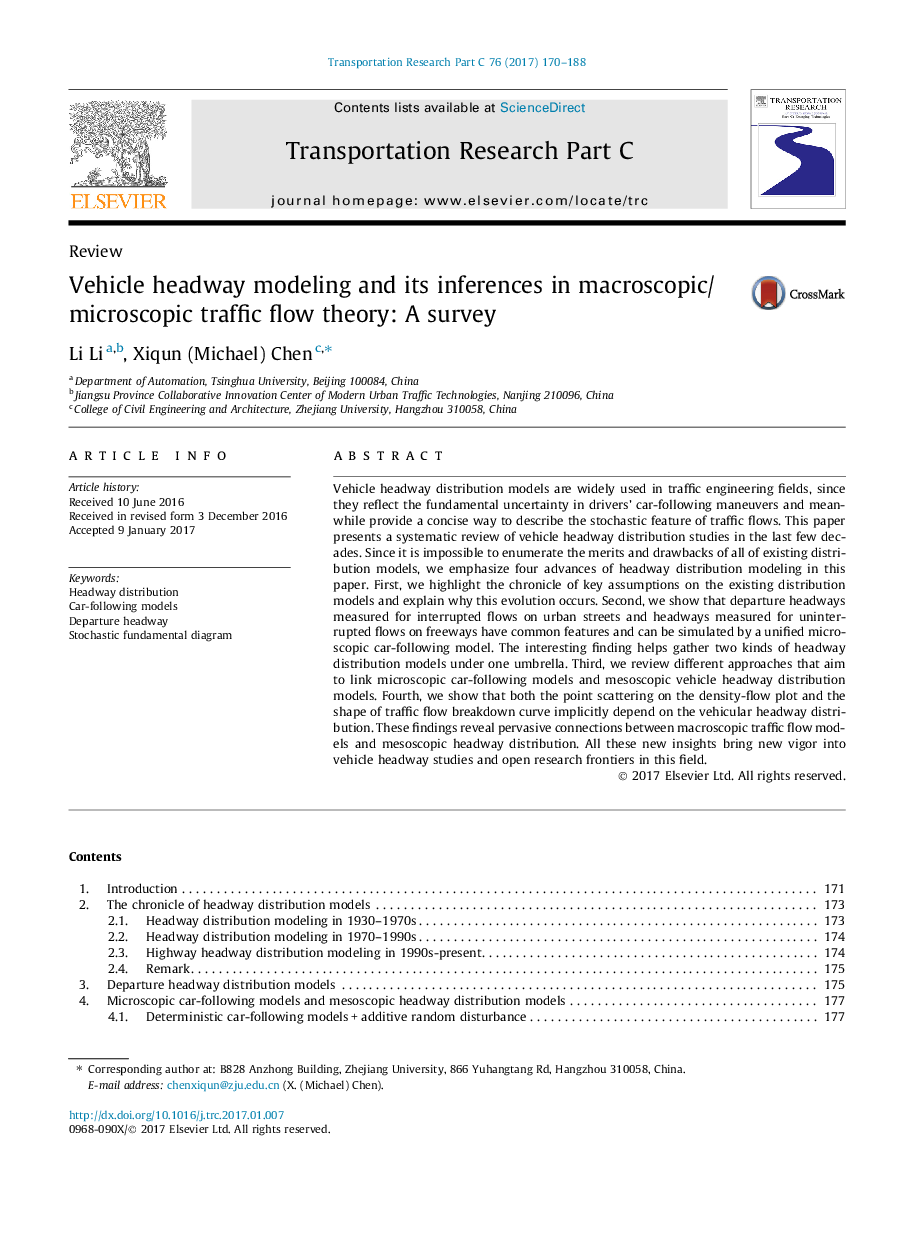| Article ID | Journal | Published Year | Pages | File Type |
|---|---|---|---|---|
| 4968525 | Transportation Research Part C: Emerging Technologies | 2017 | 19 Pages |
Abstract
Vehicle headway distribution models are widely used in traffic engineering fields, since they reflect the fundamental uncertainty in drivers' car-following maneuvers and meanwhile provide a concise way to describe the stochastic feature of traffic flows. This paper presents a systematic review of vehicle headway distribution studies in the last few decades. Since it is impossible to enumerate the merits and drawbacks of all of existing distribution models, we emphasize four advances of headway distribution modeling in this paper. First, we highlight the chronicle of key assumptions on the existing distribution models and explain why this evolution occurs. Second, we show that departure headways measured for interrupted flows on urban streets and headways measured for uninterrupted flows on freeways have common features and can be simulated by a unified microscopic car-following model. The interesting finding helps gather two kinds of headway distribution models under one umbrella. Third, we review different approaches that aim to link microscopic car-following models and mesoscopic vehicle headway distribution models. Fourth, we show that both the point scattering on the density-flow plot and the shape of traffic flow breakdown curve implicitly depend on the vehicular headway distribution. These findings reveal pervasive connections between macroscopic traffic flow models and mesoscopic headway distribution. All these new insights bring new vigor into vehicle headway studies and open research frontiers in this field.
Related Topics
Physical Sciences and Engineering
Computer Science
Computer Science Applications
Authors
Li Li, Xiqun (Michael) Chen,
